 Most U.S. history and government textbooks present the Constitution as a kind of secular Ten Commandments: James Madison brought the document from the mountain and it was Good. The books may point out that not everyone agreed on the best plan for government, but through debate and compromise “Right” triumphed.
Most U.S. history and government textbooks present the Constitution as a kind of secular Ten Commandments: James Madison brought the document from the mountain and it was Good. The books may point out that not everyone agreed on the best plan for government, but through debate and compromise “Right” triumphed.
What makes this treatment of the Constitution so pernicious is its effect on students. Removed from a social context, cast as an inevitability, the document is elevated to an almost holy status, above analysis and critique. This Constitution-as-religious-icon scenario doesn’t allow much wiggle room for student reflection. Instead, the teacher’s task is to enlist students in memorizing Constitutional wisdom: What’s meant by “checks and balances”? What’s a writ of habeas corpus? I’m sure I wasn’t the only student forced to learn by heart and repeat on command: “We the people, in order to form a more perfect union . . .” This is indoctrination, not education.
The Constitution Role Play asks students to think critically about a number of issues that confronted the original framers of the Constitution. But the role play adds a twist: instead of including only the bankers, lawyers, merchants, and plantation owners who attended the actual Constitutional Convention, the activity also invites poor farmers, workers, and enslaved African Americans. This more representative assembly gives students a chance to see the partisan nature of the actual document produced in 1787.
In the second lesson (The Constitutional Convention: Who Really Won?), with the Constitution Role Play as background, students are primed to wade into the actual document and analyze parts of it in a social context.
NOTE: This lesson is currently being updated. Complete this short form to be notified when it is available again.
Read teacher stories below about using these lessons on the Constitutional Convention.
Classroom Stories
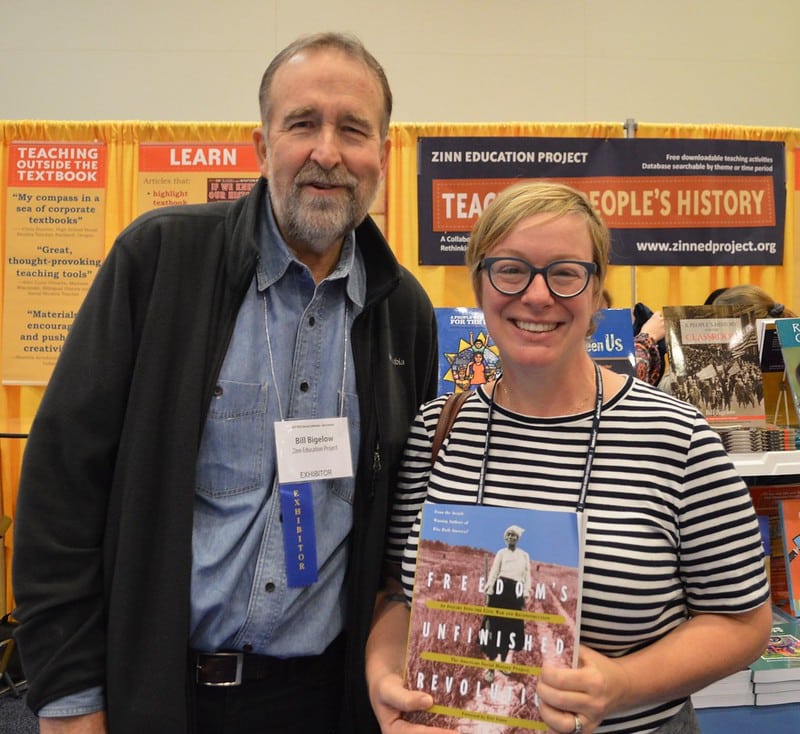
As an 8th grade teacher making the Constitution relevant and exciting can be a challenge. I have used Bill Bigelow’s Constitution role play as a way to make history come alive! It allows my students to debate issues regarding race, gender, and class and see how decisions made by those in power can have long lasting consequences.

I first came across the Zinn Education Project online in 2015. At the time I was searching for lesson materials and ideas to more fully integrate social justice into my state-mandated curriculum.
The first lesson I implemented in my classroom was Bill Bigelow’s Constitutional Convention Role Play. It was an instant success! In addition to giving students simulated practice negotiating and working as political actors, they engaged in critically thinking (and re-thinking) about the way the U.S. Constitution was created. Both my students and I were hooked!
The lesson was so successful, that students began consistently asking me when our next “simulation” would be. I have since used other lessons designed by Bill Bigelow, and frequently browse lesson materials at Zinn Ed and adapt them for my classes.
I am very appreciative of the resources available here for educators like myself, and the ways they have transformed my teaching and students’ learning.
The Constitutional Convention lesson had a huge impact on my students.
Many of my students are not white — Black and Latino, especially. Many of them did not have an understanding of just how biased the Constitution was. With the knowledge that we have gained from this lesson, students were able to then look at other situations that are currently surrounding us in the United States — such as the controversy surrounding Michael Brown, Sandra Bland, and the Black Lives Matter movement — with a more critical eye, understanding the kind of bias and uneven laws that founded this country and our government.
They were then better able to understand the anger and frustration that surrounds many Black communities in regard to both historical and current events.
They can now use the backdrop of the Constitution to better understand their own country, the frustration of others and what they have to do to move this country and the plight of a social justice worker forward. Most importantly, they were able to finally connect just how much history influences current events and our countries sentiments and culture.

The Constitutional Convention lesson was the most successful role play I’ve done yet with my 8th graders. The students really embraced their roles. Even those students with difficult roles (the plantation owners and bankers) did not shy away from their arguments and play beliefs.
The discussions got pretty heated at different points, but not so much so that we couldn’t reel things back in. There is much scientific evidence to support the idea that emotion is essential to learning, and this role play is a good case in point.
Students were talking about the convention outside the classroom, letting students in later periods know what was about to go down, so there was a lot of excitement in the 8th grade hallway and during PE throughout the week. Students were saying those magical words “this is fun” during the convention as well (and that is great praise from middle school students).
I love the Zinn Education Project role plays because they give every student an opportunity to participate in some way. Even the students who are normally shy about speaking in front of classmates are at least engaged in the dialogue and writing notes furiously.

I did the Constitutional Convention role play lesson with my 11th grade U.S. history students, and they were extremely engaged. The class worked in small groups, each representing different people who were present at the actual convention, as well as groups that were left out of the decision-making process.
The students debated the founding ideas of liberty and justice when evaluating how certain people or groups would have contributed to the meeting and discussing the possibilities of how the country would have been different if they had been included. It allowed students to be collaborative, develop critical thinking skills, and to think of history in a more relevant way.
The Constitution is often a challenging document to read for the students — since its language use is different to the way they speak today and it seems distant from their interests — but this activity allowed them to see this part of history in a relevant and impactful way.

After covering the Constitutional Convention and the utter lack of representation for anyone that wasn’t a property-owning white man, my 8th grade class successfully made it through the lesson Constitution Role Play: Whose “More Perfect Union”? and The Constitutional Convention: Who Really Won?.
Students were assigned into five different interest groups — northern bankers, southern plantation owners, enslaved African-Americans, tenant farmers, and lower-class workers — and they created resolutions in their interest and negotiated with other groups. During the convention, they abided by the rules of parliamentary procedure that we reviewed and they were able to successfully pass voting rights legislation for all citizens regardless of socio-economic status.
The students really ran with this and fully understood that our exercise was not historically accurate, but brought out the fact that had these groups been adequately represented in the summer of 1787, the hard-won rights of marginalized groups might have been won much sooner.
Thank you, Zinn Education Project, for this amazing resource!
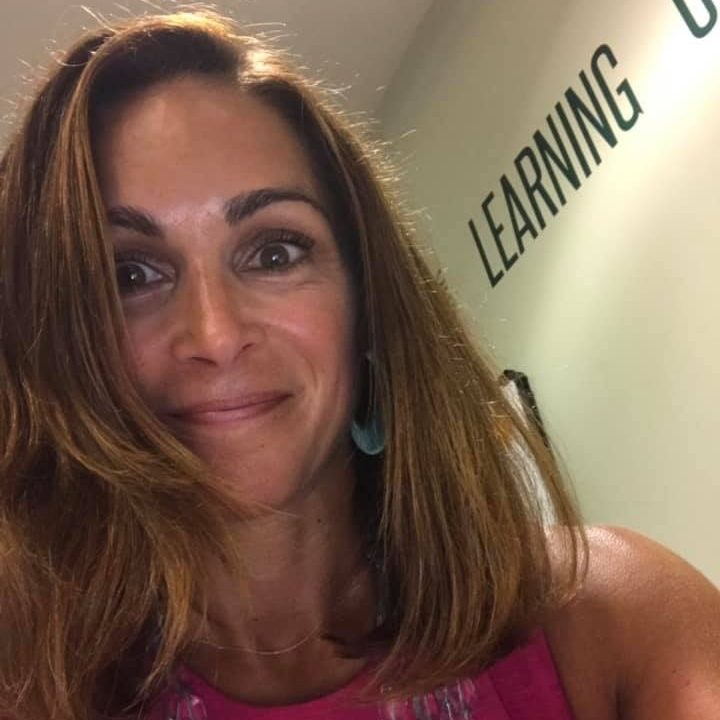
One of my favorite activities from the Zinn Education Project is the Constitution Role Play: Whose “More Perfect Union”? and The Constitutional Convention: Who Really Won? The simulation allows for students to not only use their critical thinking skills, but to challenge the traditional mythology and romanticism of American values and democracy. This lesson pairs well both in U.S. History and American Government classes, and it can be modified easily for all levels of students.
This is a fantastic activity to use at the beginning of the year, to set the stage in your classroom for political discourse and courageous conversations.
The results of our role play about “Who Really Won?” speaks volumes to the themes of any U.S. History course — it’s hard work to face hard history. But recognizing those individuals who came together collectively to bring positive change and realize many American values for those not at the table during the convention, inspires students to embrace their own voice, courage, and responsibilities as a citizen in today’s complicated political arena.
What I really appreciated about the Constitutional Convention role play materials is how thorough and clear they were. The role cards are excellent and give students enough background to play their roles effectively.
I found that students were much more interested in examining the real Constitution after they had designed their own as a class. Pointing out similarities and differences between the class version and the real version made the information much more “sticky” for them.
Any time teachers have the chance to bring a historical topic “to life” like that is fantastic. I really appreciate the work that went into creating these materials.
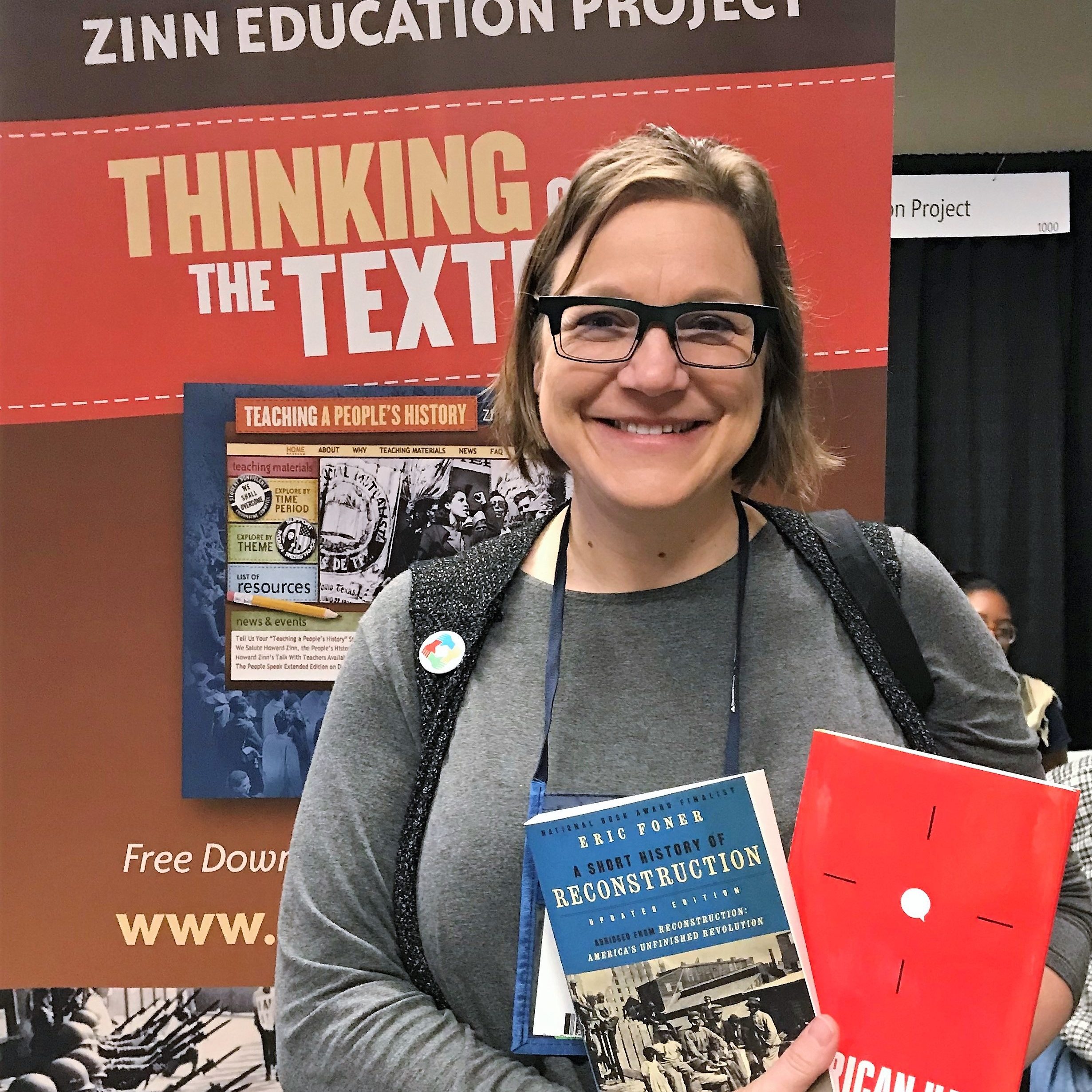
The Zinn Education Project has delivered time and time again the most impactful experiences for my students. They will not remember the PowerPoint info on the Articles of Confederation, but they will remember when they wrote the Constitution from the perspective of an enslaved African American or a member of the Iroquois nation using the Constitutional Convention role play.
They understand the problems embedded into the way our country was founded AND the remarkable opportunities we have to reshape the conversation in our nation.
More Classroom Stories

I use the Constitution Role Play lesson in my classroom as a hook for a larger unit, in tandem with Teaching Tolerance’s unit “Did the Constitution establish a just government?” The students were very engaged during the activities and created a much more just constitution in our role-play. Really appreciated the resource.
See how teachers in California, New York, North Carolina, and Illinois used the lesson in their classrooms:
Building alliances, making deals. 1787, a more democratic constitutional convention. @ZinnEdProject pic.twitter.com/Ss0GuMnQeu
— Lisa Steiner (@HistorySteiner) January 15, 2019
Making alliances for the Constitutional Convention! @ZinnEdProject #naplescsd pic.twitter.com/h1Miop3K5L
— Anneke Radin-Snaith (@AnnekeRadin) February 11, 2016
The People’s Constitutional Convention role play from @ZinnEdProject never disappoints! 1st period broke into applause after abolishing slavery and expanding democracy this morning, which led to a great discussion about why the oft-celebrated Framers did the opposite pic.twitter.com/yftyMxPYYC
— Tracey Barrett (@traceyebarrett) September 6, 2018
Welcoming so many new faces to our #AmericanStudies Unconventional Constitutional Convention @YorkD205 w @KellyDeloriea Thank you @ZinnEdProject and Bill Bigelow for another successful debate. Democracy is not a spectator sport! #IgniteD205 #teachingoutsidethetextbook pic.twitter.com/09SyoSv0kM
— Lindsey DiTomasso (@laldtd) September 10, 2018
Finished our @ZinnEdProject Constitutional Convention today. Students formed alliances, proposed resolutions, and voted on them #WeAreCarter #LionPride #BucklesHeroes pic.twitter.com/EpjXAocsW2
— Jessica Buckle (@JBuckLearns) August 29, 2019
We want to share your classroom story. If you use the lesson and tweet about it, consider tagging @ZinnEdProject.

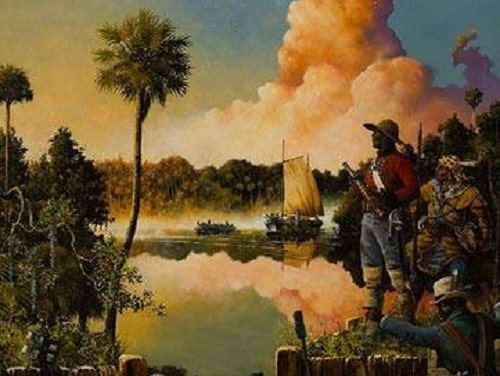

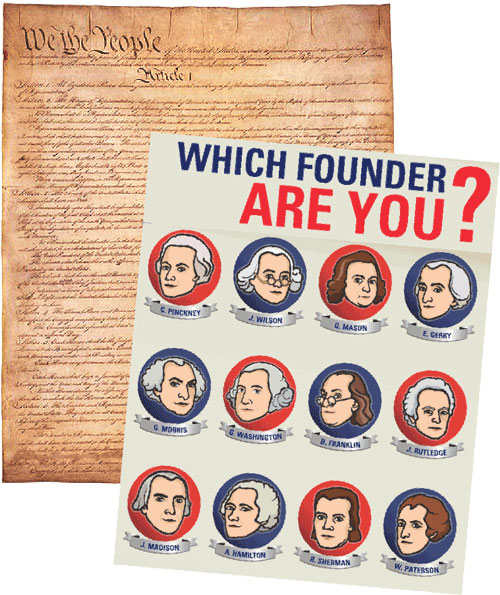
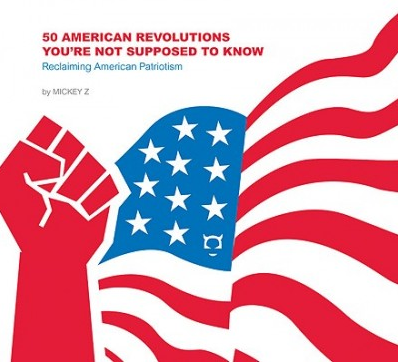

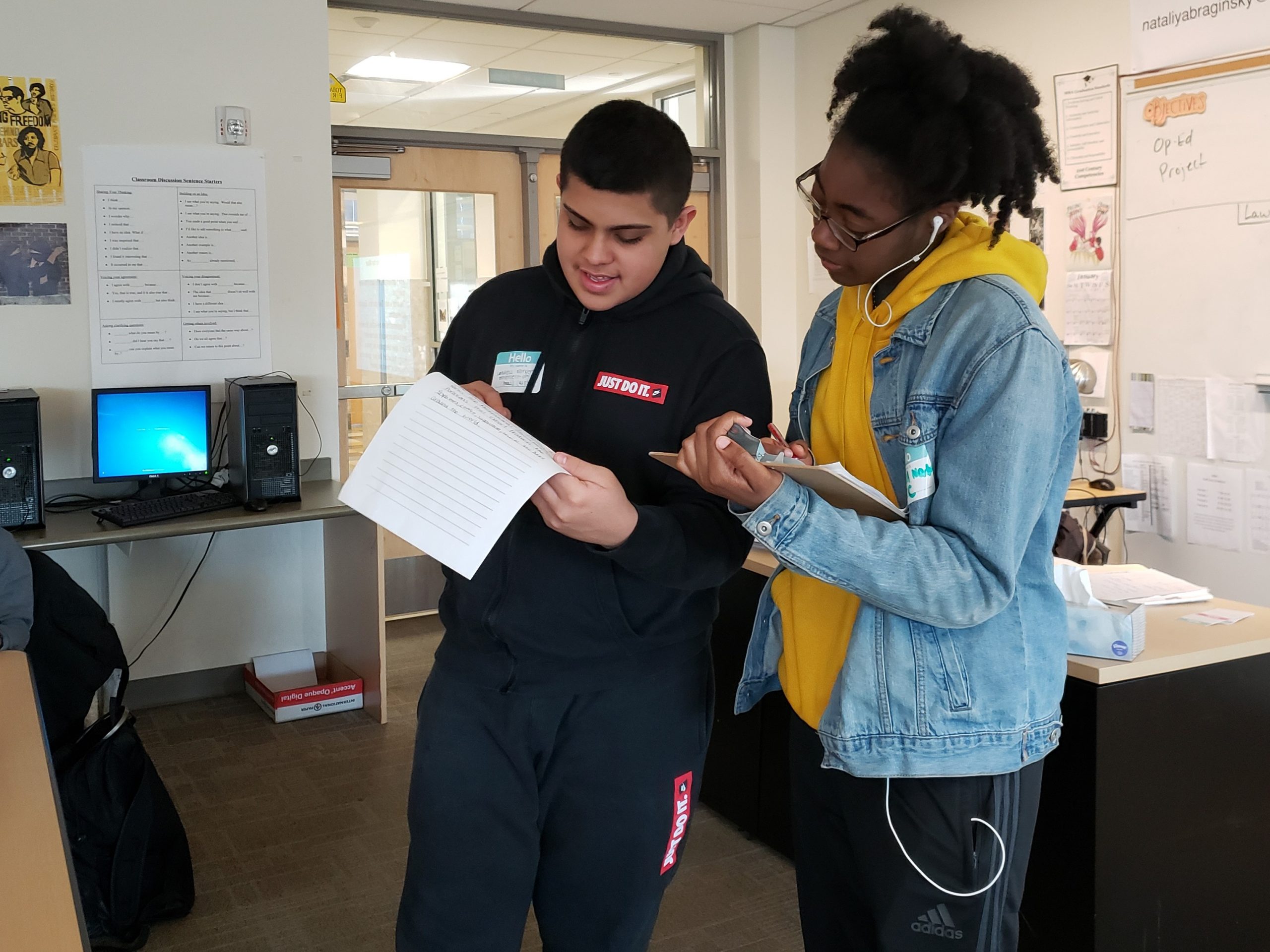
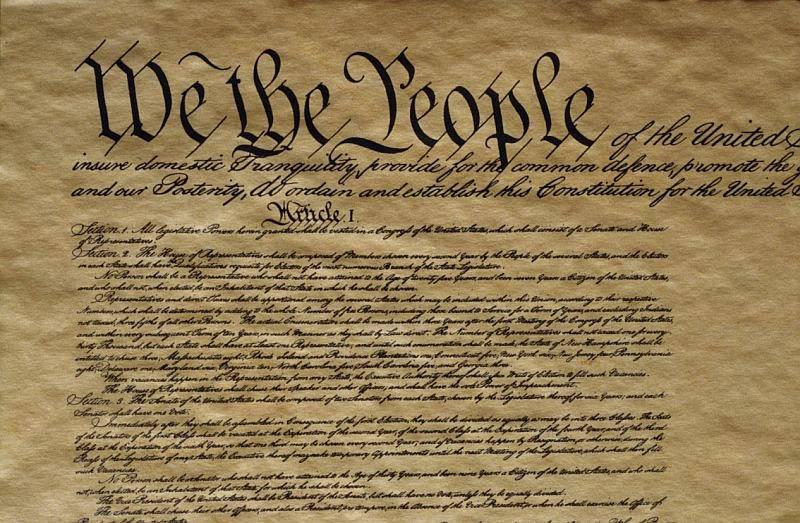






Because both of these lessons [Andrew Jackson and the Children of the Forest” and Constitutional Role Play] revolve around groups who were (are?) traditionally silenced, they appealed to several students who often choose to listen rather than to give voice in the classroom. One girl, in particular, who is very shy and does not like to speak in class, chose to deliver part of the speech for her group as Enslaved Africans at the Constitutional Convention. It was a big moment.
Another amazing moment for us was during the Indian Removal Speeches. As liberal-minded New Yorkers, we were really shocked by the group who covered Andrew Jackson’s administration. Shocked, because Jackson’s Administration sounded so convincing! Indian Removal seemed like a good idea after listening to them! We had a really rich conversation directly following the activity about the power of political rhetoric and how we had previously counted ourselves immune to it. —Mia Sacilotto, middle school humanities teacher, Brooklyn NY
Our Convention was heated, and our debriefing conversation was, too, but ultimately let to so serious “aha” moments for kids and a willingness to go deeper in class. —Benjie Achtenberg, middle school social studies teacher, East Amherst, NY
They reported back that is was exciting to be leading the class rather than listening to a teacher. The engagement was 100%. Ultimately students grasped the significance of participation in a democracy must include participation from a diverse group that includes all vested parties so that all perspectives and interests are considered. … The Constitution reflected the interests of white male plantation owners, white male landowners, white businessmen. It was also interesting to see students play roles that didn’t correspond to gender or ethnicity and then better grasp the significance and importance of representation of your personal interest group that you were role playing. —Chris Arnold, middle school social studies teacher, East Amherst, NY
Students really enjoy the role play and interacting with their peers to explore and analyze how and why specific groups of society were intentionally left out of the Constitutional Convention which has led to unequal social conditions in contemporary society. The Role Play provides the students to have collaborative conversations as well as engage complex texts in a fun, engaging context and encourages them to think critically about the world around them by providing them with a transformative. —Ryan Byrne, high school social studies teacher, Long Beach, CA
This lesson created a huge impact for my students. Many of my students are students of color, Black and Latino students, especially. Many of them did not have an understanding of just how biased the Constitution was. With the knowledge that we have gained from this lesson, students were able to then look at other situations that are currently surrounding us in the United States—such as the controversy surrounding Michael Brown, Sandra Bland, and the Black Lives Matter movement—with a more critical eye, understanding the kind of bias and uneven laws that founded this country and our government. They were then better able to understand the anger and frustration that surrounds many Black communities in regard to both historical and current events. They can now use the backdrop of the Constitution to better understand their own country, the frustration of others and what they have to do to move this country and the plight of a social justice worker forward. Most importantly, they were able to finally connect just how much history influences current events and our countries sentiments and culture. —Audra Casanova, middle school language arts/English teacher, Patterson, CA
Students were talking about the convention outside the classroom, letting students in later periods know what was about to go down, so there was a lot of excitement in the 8th grade hallway and during PE throughout the week. Students were saying those magical words, “This is fun” during the convention as well (and that is great praise from middle school students). I love the ZEP role plays because they give every student an opportunity to participate in some way. Even the students who are normally shy about speaking in front of classmates are at least engaged in the dialogue and writing notes furiously. —Kevin Sparks, middle school English, history, and humanities teacher, Oakland, CA
What I really appreciated about the role play materials is how thorough and clear they were. The role cards are excellent and give students enough background to play their roles effectively. I found that students were much more interested in examining the real Constitution after they had designed their own as a class. Pointing out similarities and differences between the class version and the real version made the information much more “sticky” for them. Any time teachers have the chance to bring a historical topic “to life” like that is fantastic. I really appreciate the work that went into creating these materials. —Aaron Harris, high school social studies teacher, Ontario, Canada
The lesson on the Constitutional Convention generates such inquiry on the part of the students. So many questions about perspectives and self interest are addressed as students decide to extend the conversations with additional characters from the present. The academic conversations lead the students to begin other areas of research regarding the role of class and race in generating central decisions in the new nation. This topic is a favorite with the students and myself as it centers on some of the more imperative thoughts on power and struggle among groups in the new nation. Students will come to the seminars dressed in character and excited to engage in a different, deeper kind of thinking. Anything Zinn in our classroom is an automatic hit. —Melisa Pinto, high school social studies teacher, Jamaica, NY
In using the “Constitutional Convention” I students were very engaged in the lives of the people they portrayed. My past teaching of the Convention included a play using Robert Morris’ notes from the convention. This approach coupled with the text, while historically accurate for the most part, did not take into account the real people’s lives that would be forever impacted by the decisions of the rich, educated, politically elite, white men in the room. Students were enraged over the buying out of the bonds that many believed robbed from the poor and gave to the rich and we were able to dialogue about how that is not a new story in history and certainly not one that is going away any time soon. As we have continued through the curriculum, students have referenced those “characters” in the development of America. —Donna Oppedisano, high school social studies teacher, Dewitt, NY
This lesson does an excellent job of making students aware of the disenfranchisement of many Americans in the Constitutional Convention. Students enjoyed working together to prepare their resolutions, and the ensuing debates during our simulation were often lively and spirited. The students advocated for their groups with feeling, not just going through the motions. They were indignant that not all of their groups were represented at the actual convention. This gave them insight as we continued with “Who Really Won?”. The materials provided were excellent at provoking thought and making a historical event very relevant for my eighth graders. They didn’t want to stop when it was over! —Blair Ellson, middle school social studies teacher, Norfolk, VA
I just held the Constitutional Convention with my 8th graders this past week and this was the most successful role play I’ve done yet (I’ve been using the Zinn Education Project materials for about four years now). This time, students really embraced their roles–even those students with the most difficult task (the plantation owners and bankers, who, after some coaching, did not shy away from their arguments and beliefs as they did in previous years).
The discussions got pretty heated at different points, but not so much so that we couldn’t reel things back in. There is much scientific evidence to support the idea that emotion is essential to learning, and this week’s role play is a good case in point.
Students were talking about the convention outside the classroom, letting students in later periods know what was about to go down, so there was a lot of excitement in the 8th grade hallway and during PE throughout the week. Students were saying those magical words “this is fun” during the convention as well (and that is great praise from middle school students).
I love the Zinn Education Project role plays because they give every student an opportunity to participate in some way. Even the students who are normally shy about speaking in front of classmates are at least engaged in the dialogue and writing notes furiously.
I am a history teacher and I did this role play last year for the first time. It was hands down the best lesson I have ever taught. The material was accessible enough for all students to understand, yet also had them thinking on an incredibly high level. It beautifully illustrated why our government was structured the way it was–because the majority of people had no voice in its formation. I will always be incredibly grateful to the Zinn Education Project for producing this work. It was only about a month ago that I realized that it is on Facebook, and now I am really enjoying the daily updates. Thank you, thank you, and thank you.